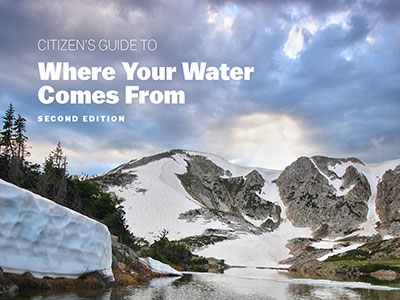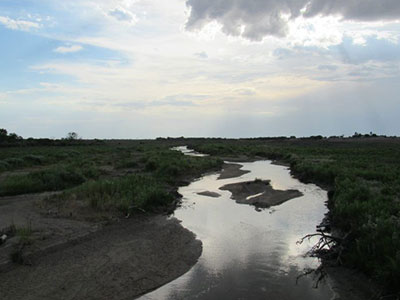Surface Water
When winter snows begin to melt in early summer, water runs off the slopes and flows down the terrain—divided by topography into distinct drainage basins or watersheds. Spring runoff provides the primary source of water for most of the state’s population and for its farms and other industries.
A river’s natural flow is determined by precipitation and watershed characteristics, but human activities like water withdrawals, storage, and land use have altered many flow regimes, or flow patterns, known as hydrographs. In Colorado, most rivers, if untouched, would experience strong peak flows in late spring when mountain snow melts, then gradually flows would slow to a base flow level or run dry in places through the fall.
Due to factors such as variable climate and drought, as well as dams and diversions to enable water use by farms, cities and industry, streamflows aren’t always sufficient or flowing at the right time of year to sustain healthy habitats for fish and wildlife or other ecological values. Environmental flows are the amount, timing and quality of streamflows required to sustain ecosystems and the people who depend on them. Environmental flow protections usually aim to mimic the patterns and functions of a waterway’s natural flow pattern.
Climate change projections across much of Colorado indicate a future with earlier runoff and warmer, drier conditions that could result in mismatches between peak flow timing and species’ needs, warmer water temperatures, new dry-up points on rivers, and reduced aquatic habitat, increasing the importance of protecting and restoring environmental flows.


